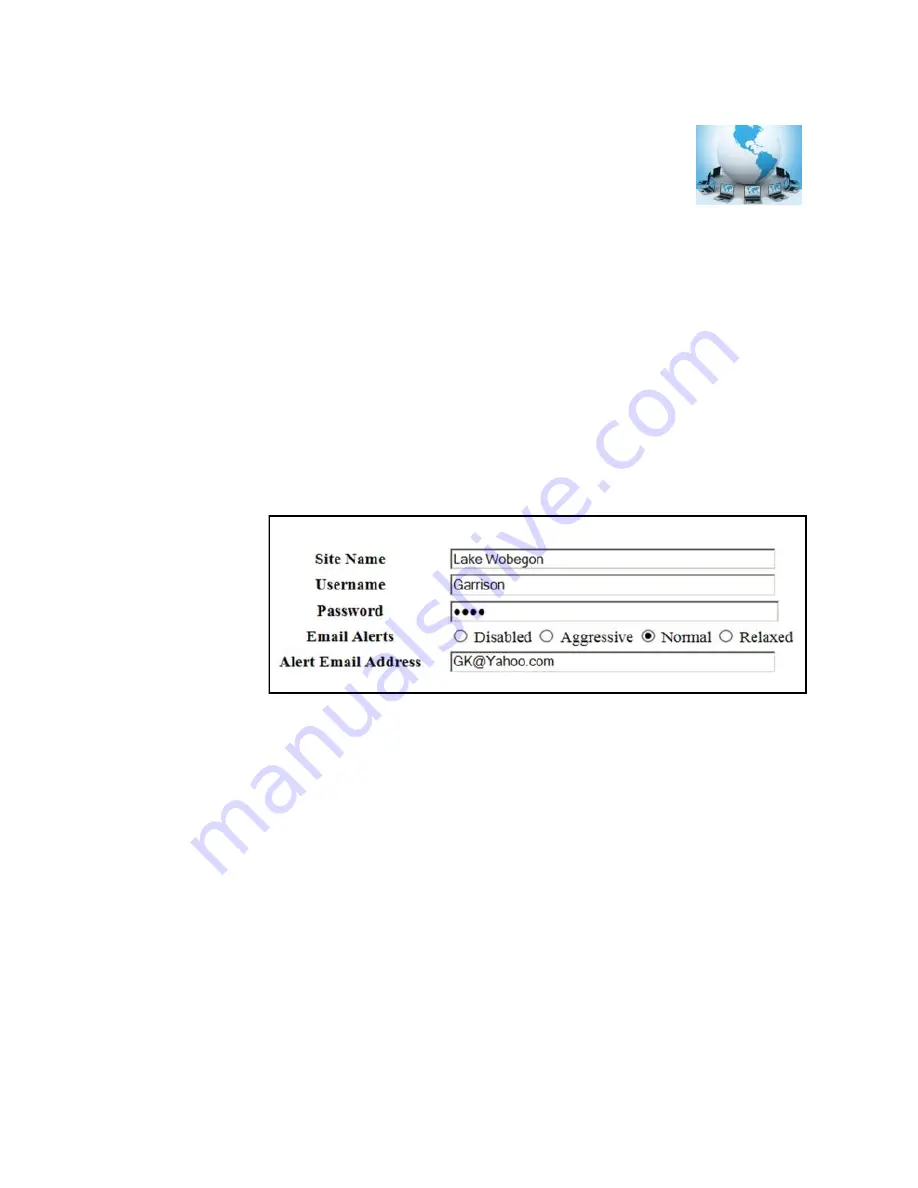
25
System Alerts
You can receive an email or text message if your CheckBox Master unit, one
of your repeaters, or your internet connection goes off-line. These System
Alerts are issued by the CheckBox Support Server, which monitors your
system. This monitoring service is included in the first year warranty that
comes with every CheckBox System, and is also included in the Extended
Warranty Program.
Before you can set up alerts you will need a Remote Site log-in. If you do not have a remote
site log-in you can request one from CheckBox by sending an email to
[email protected].
To set up alerts for your CheckBox;
1. Log in to the CheckBox support servers through your remote site login but do not click on
the name of your site to log all the way into your local CheckBox.
2. After logging into the support site click on "Update Site Information".
3. Set your Alerts to either Aggressive, Normal or Relaxed
4. Enter the email address you want the alerts sent to
5. Click the
"Update Site Info"
button
The first time you
activate the alerts
for your CheckBox,
the support system
will need to
download some
configuration updates to your CheckBox units, which may take up to 4 hours to complete.
Setting alerts to Aggressive will generate an alert if a CheckBox mesh node or a master unit
is late for any of it’s scheduled check in cycles. This may cause an excessive amount of
alerts to be generated. It is not uncommon for a unit to be late or to miss a check in cycle
due to network congestion or high traffic.
Setting alerts to Normal will generate an alert if a CheckBox mesh node or a master unit is
late or misses two check in cycles. This is the setting most users will want.
Setting alerts to Relaxed will generate an email if a CheckBox mesh node or a master unit
fails to check in with the support server within the last 62 minutes. This setting is suitable for
users with frequent power issues or issues with their internet service provider.
Many cell phone providers allow you to receive emails as text messages. If you wish to
have the alerts sent to your cell phone as a text message, check with your cell phone
provider as to the address format to use (often it looks something like
[email protected]) Some cell phone providers charge for incoming
text messages. You may be charged by your cell phone provider to receive these
messages.


















